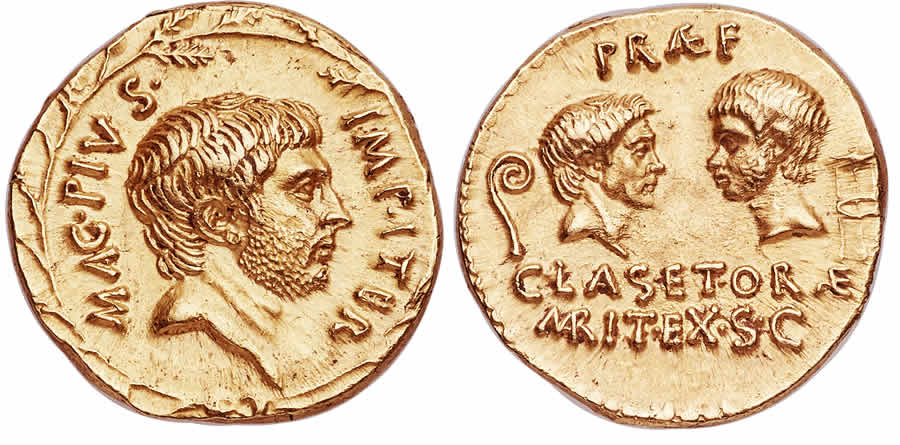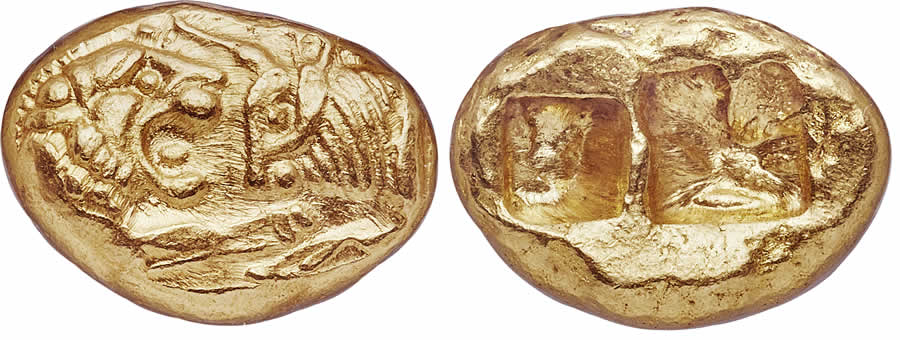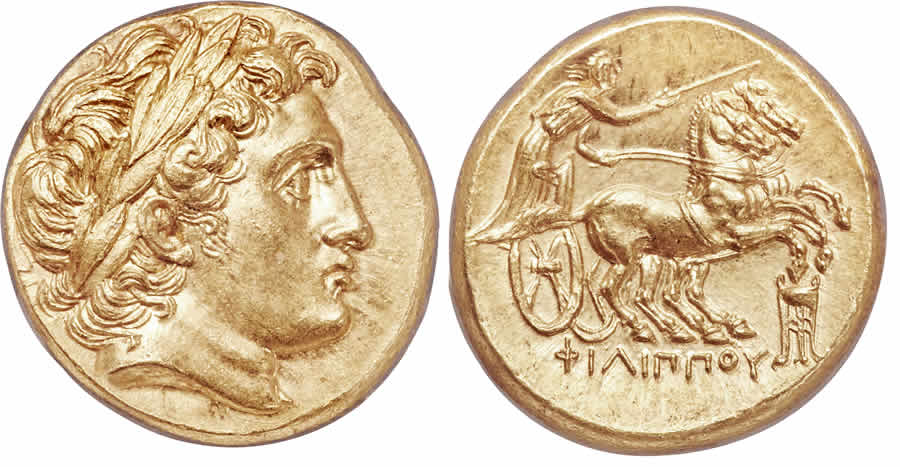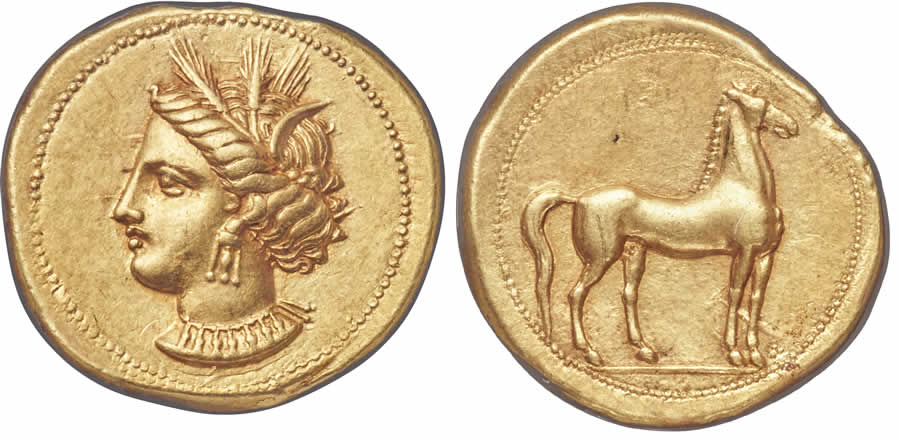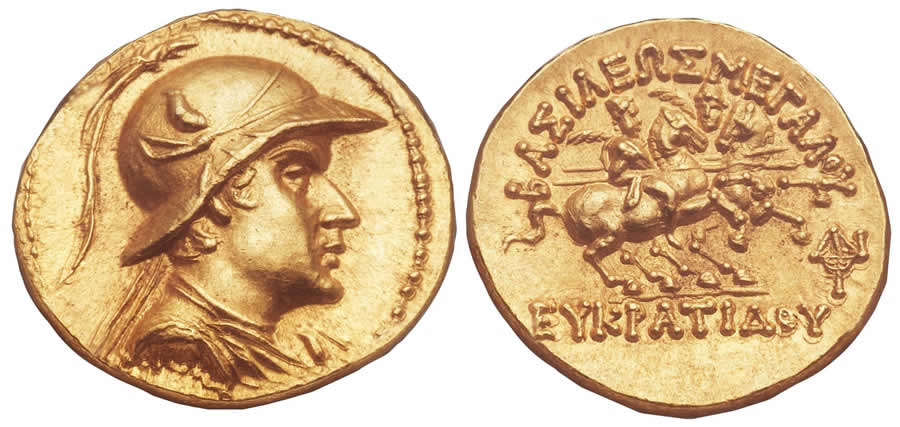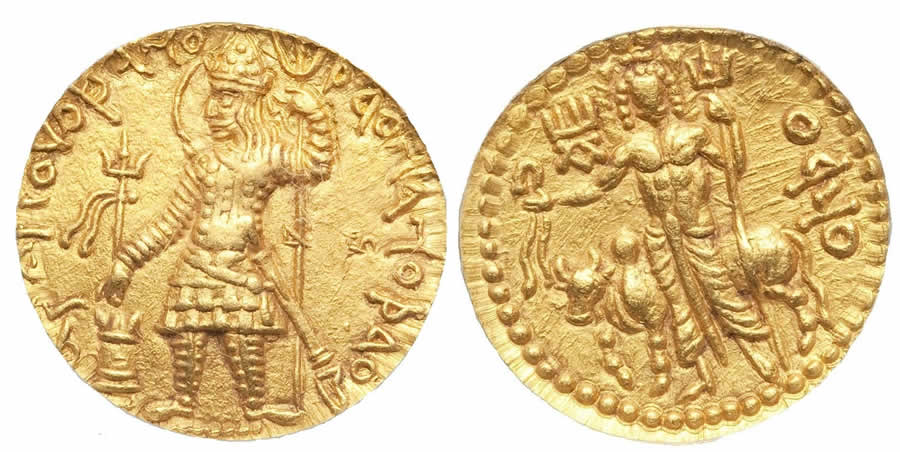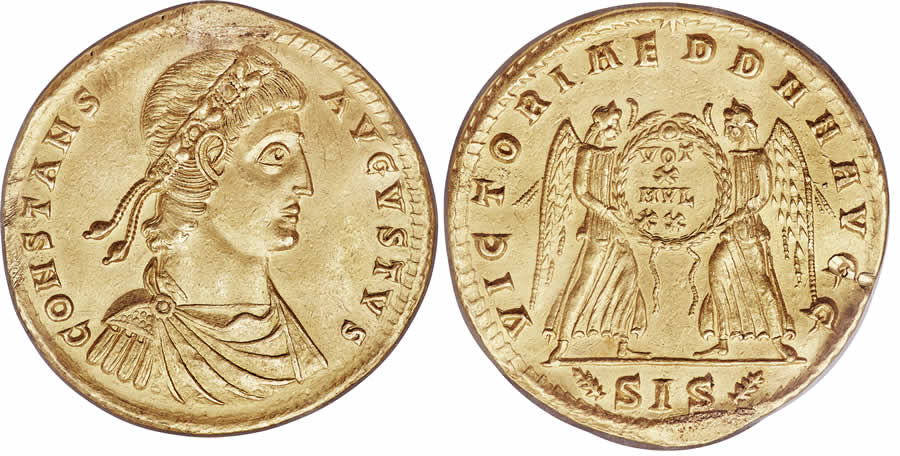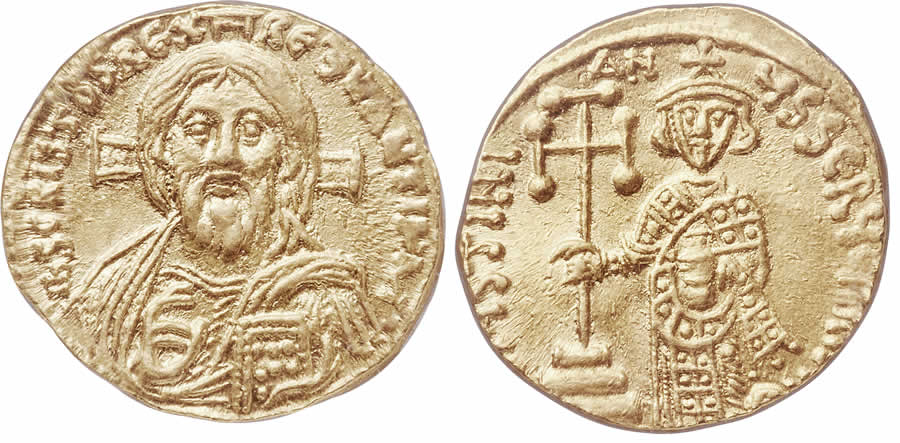ANCIENT GOLD COINS, REPLETE WITH AGE-OLD STORIES, STILL WITHIN REACH OF MOST COLLECTORS
By Zach Beasley
EVENT
CENTRAL STATES WORLD COINS SIGNATURE® AUCTION 3083
April 24-27, 2020
Live: Dallas
Online: HA.com/3083a
INQUIRIES
Cristiano Bierrenbach
214.409.1661
CrisB@HA.com
Gold has been viewed as something valuable since the dawn of coinage, and has been used as money for many reasons, most importantly as a store of value and medium of exchange.
Thankfully for collectors today, many of the ancient cultures used gold to produce breathtaking works of art we are now able to collect, study and treasure. Although gold coins are extremely popular and widely collected, with some examples reaching seven figures in value, most collectors can still acquire Mint State examples from several regions and cultures, even with a modest budget.
Here are diverse pieces from the Heritage Auctions archives, recently sold at auction.
ROMAN IMPERIAL, TITUS AS CAESAR (A.D. 79-81)
Gold Aureus
Judaean coinage in general has a massive following, and this aureus, selling for $956,000 in 2012, is one of the most spectacular gold issues still in existence. The reverse side announces the Roman conquest of the province of Judaea, which was in rebellion from A.D. 66-70, during which the Jews had killed tens of thousands of Roman soldiers and civilians. The IVDAEA CAPTA and DEVICTA coinage series was the broadest and most diverse issue of coins celebrating a Roman victory issued up to that time, comprising coins of every metal, denomination and mint. They formed an important part of the overall propaganda campaign establishing the legitimacy of the Flavian dynasty.
ROMAN IMPERATORIAL, SEXTUS POMPEY AS IMPERATOR (44-36 B.C.)
Gold Aureus
Sextus Pompey initiated the use of dynastic imagery on Roman coinage in response to the decline in traditions in favor of the larger-than-life characters popular with the masses. The careers of the recent warlords, including Sextus’ own father, Pompey Magnus, had greatly benefited from the strength of their charisma. In 42 B.C., when aurei of portrait type originally were struck, Marc Antony, Octavian, Marcus Aemilius Lepidus, Marcus Junius Brutus, Gaius Cassius Longinus and Sextus Pompey all were fighting for supremacy. This issue set an exceptionally important precedent with Sextus honoring his family and promoting his lineage. He and his brother Gnaeus portrayed their deceased father on denarii as early as 45-44 B.C., but on this series, Sextus takes it a step further by portraying himself with his deceased brother and father, reminding everyone who served the Pompeian cause. This example sold for $336,000 at an August 2018 Heritage auction.
LYDIAN KINGDOM, CROESUS (circa 561-546 B.C.)
Gold Stater
King Croesus became legendary for his wealth, and there are several almost mythical accounts of his interactions with another quasi-legendary Greek, the sage Solon, in which they discuss whether wealth and possessions can truly buy happiness. He is also famous for introducing the world’s first bimetallic standard, issuing coins of both gold and silver. Before this, coins were produced in electrum, a naturally occurring alloy of gold and silver. This example realized $132,000 at an August 2018 Heritage auction.
MACEDONIAN KINGDOM, PHILIP II (359-336 B.C.)
Gold Stater
The magnificent obverse die of this late posthumous issue of the ancient city of Colophon bears a portrait resembling Apollo that is quite distinctive and clearly depicts a real person. Comparison with the posthumous Alexander coins under the Thracian King Lysimachus and surviving portrait sculpture leaves no doubt the portrait represents Alexander III the Great himself. This piece sold for $36,000 at a January 2020 Heritage auction.
GREEK, ZEUGITANA, CARTHAGE (circa 350-320 B.C.)
Gold Stater
Carthage, a Phoenician colony on the coast of North Africa, became a maritime powerhouse in the 5th century B.C. and challenged the Greek cities of Sicily and Southern Italy for control of the western Mediterranean. By the early 3rd century B.C., most of Central North Africa, Spain and much of Sicily had fallen under Carthaginian control and mints were established at diverse places to produce coins used to pay the largely mercenary army. This early stater in pure gold shows a delicacy of style that indicates the dies were created by a Greek engraver of consummate skill. This coin sold for $15,600 at a September 2019 Heritage auction.
PTOLEMAIC EGYPT, ARISNOE II PHILADELPHUS (270-268 B.C.)
Gold Mnaieion or Octodrachm
No other kingdom or empire in the ancient world could produce such large gold coins, and this display of economic clout drew thousands of mercenary soldiers into Egypt’s service. This large and powerful army was put to maximum use by the third king of the Ptolemaic dynasty, Ptolemy III Euergetes (246-222 B.C.). Shortly after inheriting the throne of the Pharaohs, he launched a massive invasion of the neighboring Seleucid Kingdom of Syria. He easily crushed all resistance, even reaching Babylon, where he proclaimed himself King of Kings. This piece sold for $49,350 at an August 2016 Heritage auction.
BACTRIAN KINGDOM, EUCRATIDES I THE GREAT (circa 171-145 B.C.)
Gold Stater
Alexander the Great’s conquests eventually carried him all the way to the Indian subcontinent and established a Greek presence there that persisted for nearly four centuries. The region was first controlled by Alexander’s general Seleucus and his descendants. By 240 B.C., the regions encompassing modern Afghanistan and northern India had broken from Seleucid rule and became independent under their own line of kings, who were showcased in a series of coin portraits of astonishing power and realism. Greatest of these was Eucratides, circa 171-145 B.C., whose vast realm was larger than any other Greek-ruled kingdom of the time. This coin realized $141,000 at an August 2014 Heritage auction.
KUSHAN EMPIRE, VASUDEVA I (circa A.D. 191-230)
Gold Dinar
Kushan gold is still greatly underrated, but collectors are starting to catch on, in part thanks to the recent publication of Kushan, Kushano-Sasanian, and Kidarite Coins by David Jongeward and Joe Cribb. By the time of Vasudeva I, essentially only one deity – Oesho, Kushan god of high places – is found on the reverse. About 150 years earlier and moving forward, a wide array of gods and goddesses can be collected, including some borrowed from the Greek pantheon, such as Hercules. Some mint state dinar types are currently selling for less than $1,000.
SASANIAN KINGDOM, SHAPUR I THE GREAT (A.D. 240-272)
Gold Dinar
The second king of the Sasanian dynasty, Shapur I’s long and energetic reign raised Persia to glories it had not known since the heyday of the Achaemenid Kingdom eight centuries before. In A.D. 253, Shapur captured and sacked Antioch, the third greatest city of the Roman Empire, forcing the newly installed Emperor Valerian to assemble a large army and move east to confront the rampant Persians. Shapur drew the advancing Romans into a perfect trap and captured Valerian and his entourage alive, the greatest feat of arms yet by a Sasanian monarch and the worst humiliation ever suffered by a Roman emperor. A famous rock-carved relief in Naqsh-e Rustam shows Shapur seizing Valerian by the arm while another Roman Emperor (Philip) kneels before him in supplication. This coin sold for $10,200 at a September 2018 Heritage auction.
ROMAN IMPERIAL, CONSTANS, AS AUGUSTUS (A.D. 337-350)
Gold Medallion of 4½ Solidi
Medallions of multiple solidi were not intended for circulation, even though they are expressed in monetary terms, since they adhere to the weight standard at the time. They were minted as presentation pieces, typically for high-ranking military officers, and given at grand ceremonies during the visit of the emperor to the various cities. It is common to see these types of medallions with a mount of some sort, since the officer would wear it as a gift from the emperor himself. This example sold for $156,000 in August 2019.
BYZANTINE EMPIRE, JUSTINIAN II, FIRST REIGN (A.D. 685-695)
Gold Solidus
The portrait of Christ on the obverse of this solidus is the first numismatic representation of Jesus, and immediately followed the ruling of the Trullan Synod of A.D. 692 that Christ could be depicted in human form. Justinian II was ostentatiously devout and placing the divine image on his coinage reflected this. The image is remarkably naturalistic and lifelike, and was likely based on the mosaic image of Christ in the apse of the Great Palace of Constantinople, which was itself influenced by Hellenistic depictions of Zeus. This example realized $13,200 at an August 2018 Heritage auction.
Denominations
- aureus: ancient gold coin used in the Roman Empire; also used for similar coins imitating Roman aurei by cultures who traded with Rome
- denarius: ancient silver coin used in the Roman Empire; also used for similar coins imitating Roman denarii by cultures who traded with Rome
- dinar: ancient gold coin used by eastern cultures, such as India and Sasanian Kingdoms, through the Ottoman Empire, to modern day Saudi Arabia
- solidus: ancient gold coin used in the Roman Empire; it replaced the aureus during the monetary reform of Constantine the Great, circa A.D. 318, and remained in use during the Byzantine Empire until the reign of Nicephorus II (A.D. 963-969)
- mnaieion, octodrachm: ancient gold coin used by the Ptolemaic Empire
 ZACH BEASLEY, senior numismatist in the World & Ancient Coins department at Heritage Auctions, has written for Coin World magazine.
ZACH BEASLEY, senior numismatist in the World & Ancient Coins department at Heritage Auctions, has written for Coin World magazine.
This article appears in the Spring/Summer 2020 edition of The Intelligent Collector magazine. Click here to subscribe to the print edition.



